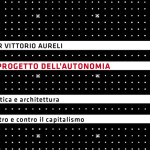Toward a minor architecture

From Jill Stoner’s introduction:
Where (in the world) is architecture going? As much as any art, it relies on languages of masters for momentum. In former times, its masters were deities and monarchs; since the industrial revolution, these have been replaced by the more abstract economic forces of “free” markets. Architecture’s recent agendas have set their shallow roots in the soils of techno-virtuosity and eco-ethics. […] In thrall to influences and desires of economic power, the major language of architecture is yet one more product of a culture increasingly dominated by symbolic capital. Its conventions teeter at the precipice of saturation, leading us to this seemingly strange proposition: Architecture can no longer limit itself to the aesthetic pursuit of making buildings; it must now commit to a politics of selectively taking them apart. […]
As we begin to investigate what minor architecture might mean, we must be prepared for its precise nature to elude capture. It rejects a definite article, divides and branches toward multiplicity. So let us shift to the plural. In their deceptively simple spatial strategies and in their many guises as intensely complex theoretical constructions, minor architectures will alter and dematerialize the constructed world. […]
A minor literature doesn’t come from a minor language; it is rather that which a minority constructs within a major language.
– Gilles Deleuze and Félix Guattari, Kafka
The notion of minor architecture presented here emerges in response to Deleuze and Guattari’s critical writing on minor literature. In their study of Franz Kafka […] they locate “minor” and “minority” as conditions that exist at the bottoms of power structures, yet hold an extraordinary potential for power. […] Opportunities for minor architectures emerge when the soul of a society is understood as more than a singularity, when – though a major soul constructs – minor souls await opportunities to de(con)struct. Minor architectures are, in fact, opportunistic events in response to latent but powerful desires to undo structures of power. […]
Perhaps in order to engage minor architecture as a practice, we must first propose the axiom that there can be no official language of architecture. […] Minor architectures operate from outside the major economy, potentially outside the architectural profession, and outside prevailing critical frameworks – outside these dominant cultural paradigms, but inside architecture’s physical body. […] The spatial conditions we are calling minor may already be close by, latent within our consumer objects, veiled by property relations. To ease them out is to think outside conventional visual paradigms, to resist the linearity of time and the seduction of progress. […] Minor architectures operate throug verbs, not as nouns. Provoked by desires for resistance, fragmentation, and opposition, they may be mobilized within buildings that are underutilized or diminished by real or perceived obsolence. […]
Minor actions […] reframe the definition of architecture from the making of buildings with materials of nature to the making of spaces within the already built. […] They will have consequences of incompleteness and imperfection; but minor architects delight in imperfect, incomplete outcomes.
Contents
ix. Preface. 1. What is minor architecture? 21. The myth of the interior. 47. The myth of the object. 71. The myth of the subject. 93. The myth of nature. 109. Notes. 154. Notes on the illustrations. 155. Sources. 163. Index.
Info
title > Toward a minor architecture.
author > Jill Stoners
publishing house > The MIT Press
pages > 176
year > 2012
price > $20.95
Related Posts
Questo sito usa Akismet per ridurre lo spam. Scopri come i tuoi dati vengono elaborati.








Lascia un commento